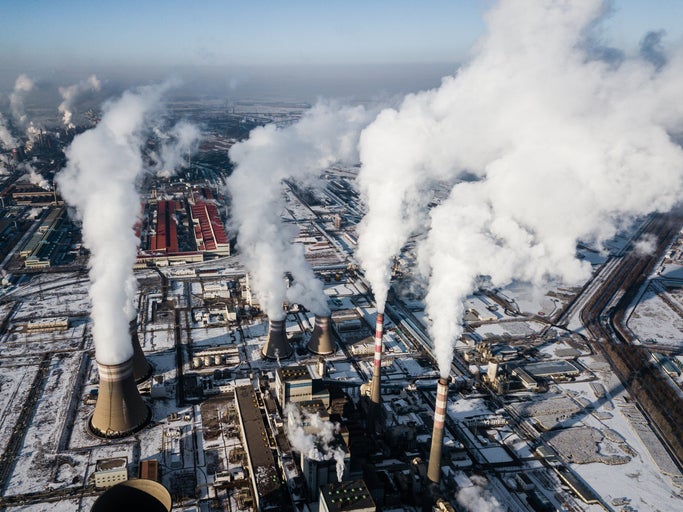In 2022, permits for new coal power plants in China reached their highest level since 2015, according to a report from think tank the Centre for Research on Energy and Clean Air (CREA) and NGO Global Energy Monitor (GEM) released this week. Local governments approved permits for 106GW of new coal-fired power capacity last year.

The report also reveals that more than 50GW of coal power capacity started and restarted construction in 2022, more than 50% more than the year before. In total, the coal power capacity starting construction in China was six-times larger than the rest of the world combined. New coal power capacity added to the grid in 2022 (26.8GW) was steady compared with 2021 (26.2GW), but researchers expect an increase in a few years when the newly permitted power projects come online.
“China continues to be the glaring exception to the ongoing global decline in coal plant development,” said Flora Champenois, research analyst at GEM, in a press release. “The speed at which projects progressed through permitting to construction in 2022 was extraordinary, with many projects sprouting up, gaining permits, obtaining financing and breaking ground apparently in a matter of months.”
China is the world’s biggest carbon emitter. Chinese President Xi Jinping has said the country will strive to achieve peak emissions before 2030 and be carbon neutral by 2060. Its coal expansion is at odds with the need to phase out fossil fuels to reach that goal. The International Energy Agency warned almost two years ago that global net zero means there can be no new oil, gas or coal development.
Yet the upswell in coal power development does not necessarily mean that the use of coal or even emissions from coal production will increase. China is also investing heavily in renewables. If its clean energy capacity grows as planned and there is no sudden uptick in demand, extra coal power generation might not be necessary.
“The intention of the government is to start reducing coal consumption overall after 2025, which is when these plants would come online,” says Lauri Myllyvirta, lead analyst at CREA. “The government’s plan is to reduce coal-fired power generation while increasing [coal] power plant capacity, meaning that the utilisation rate of the plants will fall.
How well do you really know your competitors?
Access the most comprehensive Company Profiles on the market, powered by GlobalData. Save hours of research. Gain competitive edge.

Thank you!
Your download email will arrive shortly
Not ready to buy yet? Download a free sample
We are confident about the unique quality of our Company Profiles. However, we want you to make the most beneficial decision for your business, so we offer a free sample that you can download by submitting the below form
By GlobalData“The average utilisation rate of coal plants in China is currently just over 50%, which is already low," he adds. In his eyes, investing in new coal plants today is "at the very least, economically more wasteful than shifting investments to clean solutions now".
[Keep up with Energy Monitor: Subscribe to our weekly newsletter]
China accounted for $546bn (3.77trn yuan) of energy transition investments in 2022, nearly half of the global total, according to a report from the research company BloombergNEF. These investments mean that China could be on track to start reducing coal consumption after 2025 or even sooner, suggests Myllyvirta. However, analysts worry that if all the newly permitted plants come online, both the government and power companies will push to continue using coal.
“China's targeted rate of emissions reductions after [a peak by 2030] is an open question and these kinds of vested interests make it harder to arrive at ambitious targets,” says Myllyvirta.
Meanwhile, a deadly coal mine collapse last week in northern China left at least six people dead and almost 50 missing. The cause of collapse at the open-pit mine is still unknown, and the Chinese government has launched an investigation and sent working groups to supervise and inspect mines.
The collapse was just the latest in a string of deadly accidents. In 2022, 168 coal mining accidents caused the deaths of 245 people, according to the Chinese National Mine Safety Administration. This is significantly higher than the year before, when 91 accidents caused 178 deaths. The mine in northern China had halted production for three years but restarted in April 2021, reported Reuters.
According to data from GlobalData, Energy Monitor’s parent company, China produced around 4.4 billion tonnes of coal in 2022 – almost 8% more than the year before. Shortly after Russia’s invasion of Ukraine, coal imports surged, driven by concerns about energy security. China believes its energy security depends in part on coal, meaning that coal mining and the development of coal power plants are expected to remain priorities for the near future.







